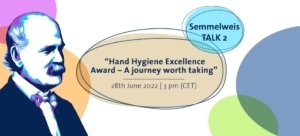The use of nanosilver in consumer products is increasing. Most applications claim to have hygienic or disinfecting properties on skin, hair, surfaces, equipment and water. But these nanoparticles are not harmless. They facilitate the formation of resistant germs. Assoc. Prof. Hans-Peter Hutter from the Institute of Environmental Health, Medical University Vienna was interviewed by Carola Timmel.
Antiviral – antifungal and antibacterial: They are tiny and have fascinating properties, the nanosilver particles (NSPs). „No wonder that they are among the most attractive nanomaterials, even in the medical field“, says Hans-Peter Hutter from the Institute of Environmental Health in Vienna. In fact, the areas of application are wide: They are used in a broad range of biomedical applications, including especially as a treatment for external wounds or as medical device coating such as breathing tubes.
The problem is, however, that the use of nanosilver in consumer products like textiles, cosmetics etc. is increasing rapidly although their health and environmental impact is still uncertain: “I welcome their use in the medical field, but definitely not for everyday domestic applications”, says Hutter, who observes an unfortunate development, that can be illustrated by a lot of examples: “Last year I wanted to buy winter sporting socks – I did not find a single product without nanosilver. It is an alarming trend, which has great effects on our environment and in the formation of resistant germs. The release of silver nanoparticles from everyday products into the environment might foster pathogenic microorganisms to become resistant to this bacterial weapon… With the extensive use of nanosilver in low concentrations the risk that bacteria become resistant to the antibacterial effect of silver might increase, warns the physician.
“Unfortunately the scientific evidence is still inadequate”, regrets Hutter. There is few information on the bacterial resistance mechanisms to nanosilver. However, recent data suggest that a combined exposure to ionic silver and nanosilver seems to produce a stress-response affecting gene expression. Hutter: “Considering the risk to jeopardize the medical advantages and benefit of silver applications for patients, it is essential to implement a far more careful use of all nanosilver applications.”




